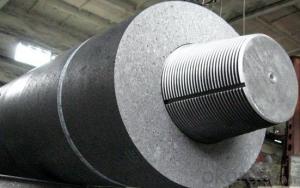When we talk about the magic of water electrolysis, it’s hard not to get a little excited. It’s like a science experiment that could potentially change the world. And at the heart of this process, we have the graphite electrode, a silent hero that doesn’t get as much credit as it should. But today, we’re going to shine a light on this unsung champion and explore its applications in water electrolysis.
Let’s start with the basics. Water electrolysis is the process of splitting water (H2O) into its two components, hydrogen (H2) and oxygen (O2), using electricity. It’s a clean and efficient way to produce hydrogen, which is a versatile energy carrier and can be used in various applications, such as fuel cells, transportation, and even cooking.
Now, the graphite electrode plays a crucial role in this process. It’s made from graphite, a form of carbon that has unique properties, such as high electrical conductivity and resistance to corrosion. These properties make it an ideal material for use in electrolysis cells.
But why is the graphite electrode so special? Well, it’s all about its structure. Graphite has a layered structure, with carbon atoms arranged in a hexagonal pattern. This allows electrons to move freely between the layers, making it an excellent conductor of electricity. And when it comes to water electrolysis, this is exactly what we need.
The process begins when the graphite electrode is submerged in water. When a voltage is applied, the electrode starts to attract and repel ions in the water. This creates a flow of electrons, which in turn generates a current. The current then drives the electrolysis reaction, breaking the water molecules into hydrogen and oxygen.
One of the advantages of using graphite electrodes is their durability. They can withstand high temperatures and pressures, making them suitable for various industrial applications. Plus, they’re relatively inexpensive compared to other electrode materials, such as platinum or iridium.
But there’s more to graphite electrodes than just their practical benefits. They also have a certain charm, a certain elegance in their simplicity. They’re not flashy or showy, but they get the job done. And in a world where we’re constantly searching for sustainable energy solutions, that’s exactly what we need.
So, what are some of the applications of graphite electrodes in water electrolysis? Let’s dive in and explore a few examples.
1. Hydrogen production: As mentioned earlier, one of the primary applications of water electrolysis is hydrogen production. Graphite electrodes are used in electrolyzers to produce hydrogen, which can then be used as a clean fuel source. This is particularly useful in countries with abundant water resources, where hydrogen can be produced on a large scale.
2. Renewable energy storage: Water electrolysis can also be used to store energy from renewable sources, such as solar and wind power. During periods of high energy production, excess electricity can be used to split water into hydrogen and oxygen. The hydrogen can then be stored and used later when energy demand is high. This helps to balance the grid and reduce the reliance on fossil fuels.
3. Chemical processing: In the chemical industry, hydrogen is often used as a reducing agent or a source of energy. Graphite electrodes can be used in electrolysis cells to produce hydrogen for various chemical processes, such as the production of ammonia, methanol, and other chemicals.
4. Metal extraction: Electrolysis is also used in the extraction of certain metals, such as aluminum and copper. Graphite electrodes can be used in the electrolytic cells to reduce metal ions from their ores, resulting in the production of pure metal.
5. Environmental applications: Graphite electrodes can also play a role in environmental remediation. For example, they can be used in the treatment of wastewater, where they help to break down pollutants and remove heavy metals from the water.
In conclusion, the graphite electrode is a versatile and essential component in water electrolysis. Its unique properties, such as high electrical conductivity and corrosion resistance, make it an ideal choice for various applications. From hydrogen production to environmental remediation, the humble graphite electrode is quietly revolutionizing the way we produce and store energy. So, the next time you think about water electrolysis, remember the graphite electrode – the unsung hero behind the scenes.

